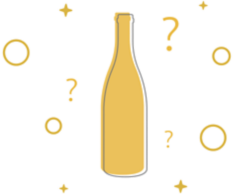So there are no hard and fast rules for drinking. You just drink, right? Yes and no. Getting schooled on any spirit gives you the opportunity to fall in love with it when before you might have been on the fence. Gin is one of those spirits that can get a bad rep for being “too pine-y,” harsh or tasting like cleaning fluid, as some haters claim.
But it’s actually one of the most versatile and exciting spirits, distilled with a range of botanicals that play beautifully in cocktails with a wide range of ingredients. Once you get beyond the typical botanicals of a classic London Dry gin—like juniper, coriander, angelica root, citrus— you’ll find all manner of experimental “new” gins playing with lemongrass, Douglas fir or lavender, to a name a few possible ingredients distillers are playing with. It’s safe to say, there’s a gin out there to suit all tastes.
These are five helpful “rules”—with advice from gin experts—to keep in mind as you dig into gin.
1. Try Gin in Cocktails, Preferably a Martini
One of the great temples to gin in the country is a gin-focused cocktail lounge in San Francisco, a transporting space offering more than 600 different kinds of gin (and counting), modeled after a Victorian era gin palace, distilling room and now-defunct London tube stop, depending on which area of the bar you’re sitting in. Its resident ginnoisseur, (yes, someone who curates, searches for and can talk to you in detail about all these gins), knows a thing or two about drinking gin and offers some advice on finding “your” gin: Try each gin in a Martini or a somewhat neutral drink to highlight botanicals and see what the gin can do. Gin is made for cocktails—it marries, carries and elevates a cocktail with range and nuance.

2. Maybe You Want to Go with a Gin & Tonic or Even Gin & Coke
Across the pond in England, gin expert David T. Smith (of Summer Fruit Cup, a site with more than 400 gin reviews, and the author of the books How to Make Gin, Forgotten Spirits and Long Lost Liqueurs has spent years studying hundreds of gins and how they pair with different tonics. Yes, a quality tonic makes a difference. But he also says, “The tonic should always be chilled. ... If the tonic is warm, the whole mix will taste sweeter and will be less fizzy.”
He also vouches for mixing it up: “Read tonic labels and look for the flavor profile. For example, if there’s rosemary tonic, you can look for gins that might work with rosemary. Or choose a classic London Dry gin that mixes well with a range of tonics. There are a lot of other sodas that work well with gin, like soda water and citrus sodas, or if you want to be bit controversial, cola works well with gin.”
3. When Making Gin Cocktails, Complement and Contrast
The possibilities with gin cocktails are endless. Rivers encourages complementing and contrasting. “A citrus-forward gin doesn’t need more citrus, so think about what would highlight the citrus and compliment it? The same goes if a gin is floral. Everybody loves to mix patterns in clothes. Why not in drinks?”
4. Don’t Be Afraid to Drink Gin Neat
“Don’t be afraid to drink gin neat,” says Smith. “These days, a lot more gins are designed to be drunk neat. Gone are the days where drinking gin is like drinking a Christmas tree.” He explains that it’s easier than ever to find a gin that might feature flavors you prefer, whether you like cinnamon or cardamom, citrus or floral notes, “especially if you bring barrel-aged gins into the mix.” Barrel-aged gins have proliferated in recent years, particularly from small-batch distillers across the U.S.
5. Play with the Temperature
If you want to take this whole gin thing a step further, Smith geeks out with temperatures. “I like looking into how temperature changes the taste of a drink,” he says. “When you freeze gin, it changes the texture—it becomes thicker, more viscous. Then, as the gin warms up, the flavor profile opens up.” So try sticking a bottle in the freezer, as many do with vodka, and watch how the spirit unfolds.
6. Once You’ve Become a Gin Geek, Sip Vintage Gins
If you really start to get into gin there is another realm: vintage gins. Generally, you’ll find more collectors’ bottles overseas in cities like Tokyo that stock more than a thousand spirits, including decades-old bottles available by the pour.

